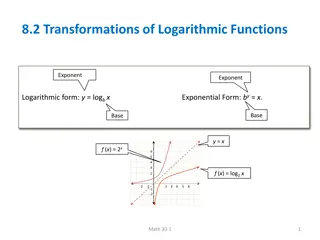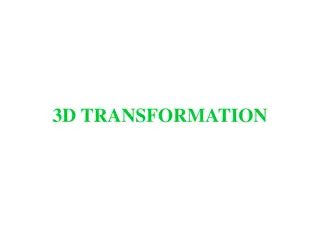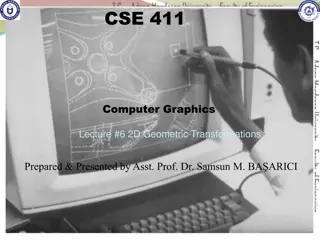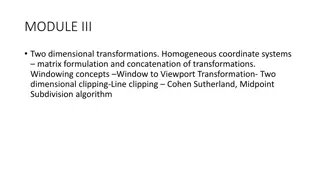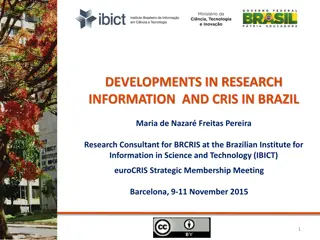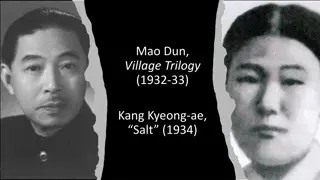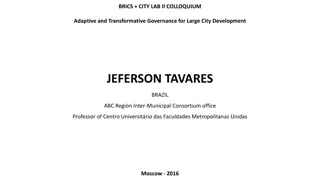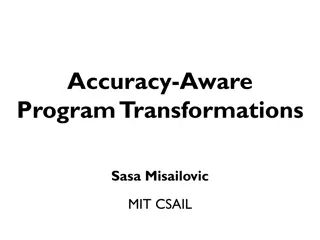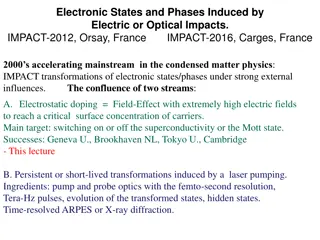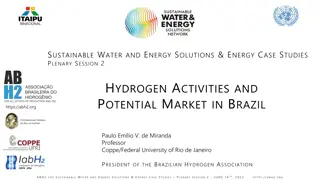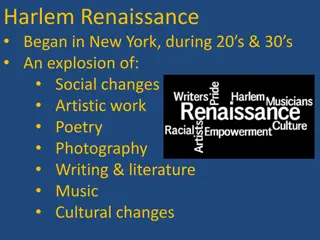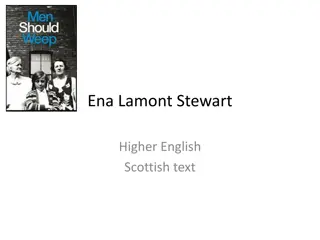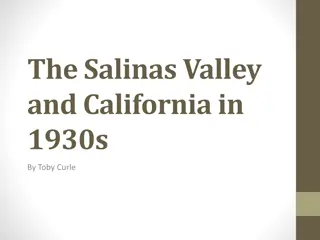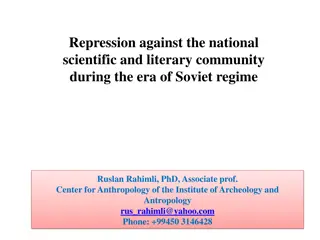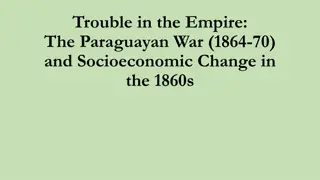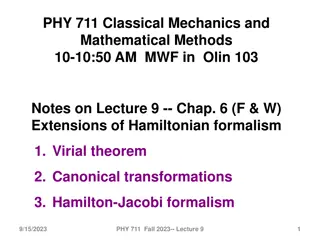Transformations in Brazil during the 1920s and 1930s
Brazil experienced significant changes in the 1920s and 1930s, including the rise of the military, economic growth post-World War I, demographic shifts with urban expansion, improved literacy rates, and the emergence of a growing middle class. These transformations highlighted the need for political reform to address the evolving social landscape and economic structure.
Download Presentation

Please find below an Image/Link to download the presentation.
The content on the website is provided AS IS for your information and personal use only. It may not be sold, licensed, or shared on other websites without obtaining consent from the author.If you encounter any issues during the download, it is possible that the publisher has removed the file from their server.
You are allowed to download the files provided on this website for personal or commercial use, subject to the condition that they are used lawfully. All files are the property of their respective owners.
The content on the website is provided AS IS for your information and personal use only. It may not be sold, licensed, or shared on other websites without obtaining consent from the author.
E N D
Presentation Transcript
Week 2: The Breakdown of the Old Order: the 1920s and the 1930 Revolution
Last week: the Republic to about 1914 The advent of a Brazilian Republic that toppled the Old Empire in a coup in 1889 Changes: Rise of the military as a political power broker (a new moderative power )? Positivism: notions of order and progress applied to e.g. race and whitening, or urban modernisation, discovery of interior Continuities: Coffee dominates economy Powerful coffee families dominate politics
First World War Brazil is neutral for first 3 years, then comes in on Allied side (only Latin American country to take part) Ideologically: frustrated quest for world recognition idea of Brazilian solutions to Brazilian problems. Isolation from European trading partners prevents imports of machinery and materials for industrialisation in some sectors Promotes industrialisation in others; trade among Latin American nations Industry overall grows 4.4% per year 1915-1917.
Post-war economic developments Growth increases dramatically : 10.1% in 1920 Recovery in 1920s; coffee prices remain high Some government investment in e.g. cement, steel, paper, rubber, machinery Decline of Britain as main trading partner, replaced by US and Germany
Demographic change by the 1920s National population has grown : 22M in 1910; 30.6M in 1920, over 35M by 1930 Huge urban expansion: Rio de Janeiro has 1.16M people in 1920; S o Paulo has 580,000 Growth of Rio Grande do Sul: third most populous state by 1920s 650,000 immigrants arrive 1900-1910; and 820,000 1910-1920 By 1920, Brazil has largest percentage of foreign- born people in its whole history.
Social changes by 1920s Literacy rates much higher: 29% of men, 20% of women Growing middle class in cities; their interests not represented by oligarchic politics Plus working Brazilians completely ignored Rural vote (managed by coroneis) always outweighs urban sectors Ie politics not keeping pace with social change
Economic changes by 1920s Still primarily rural economy: 1920: over 6M of labour force (70%) in agriculture; 1.2M in industry But: significant increase in industrialisation: agricultural sector falls from 45% of GDP in 1900 to 35% in 1913. Industry goes from 10% of GDP in 1900 to over 20% by 1929.
Regional divides South/ South-East industrialises and develops; NE/ North decline Internal migration: DROUGHTS in North-East; uneven regional economic development brings rural migrants to cities of South-East Separate military forces for each state Poor transport / communication Fear by 1920s that Brazil will break apart
Brazilian Modernism New artistic/ literary developments in 1920s Artists/ writers based in S Paulo E.g. the artist Tarsila do Amaral; the writer Oswald de Andrade Influenced by European art trends but also in Brazilian national realities Journeys of discovery to rest of country Use French modernism, cubism, later surrealism, to produce authentically Brazilian works tropical colours, ordinary people and customs
Tarsila do Amaral, Carnival in Madureira, 1924
Tarsila do Amaral, Abaporu (the man who eats )
Anthropophagism Painting Abaporu (1928) meaning the man who eats people in Tupi-Guarani Sparks anthropophagist manifesto by Oswald de Andrade (1928) resist European cultural dominance by eating it and creating something uniquely Brazilian Preoccupation with non-elites, but still an elite cultural movement
Politics in the 1920s Early Republic: military leave centre stage, but broker deals in the wings 1891 constitution: read by many in military as ALLOWING this Meanwhile, politics dominated by oligarchic coffee with milk alliance (Minas and S Paulo) Dissatisfaction among: new urban middle classes; Rio Grande do Sul Elections seen increasingly as corrupt, managed, people know they are not being represented
Tenentismo Periodic attempts within the MILITARY to shake this up, usually the younger ranks Emergence of the TENENTES - lieutenants - by early 1920s tenentismo dissatisfied with Brazil s progress; comparison with US/ Argentina Idea of Brazilian solutions for Brazilian problems
Strife in the 1920s Contentious fraudulent election 1922 Barracks revolt Copacabana 1922 participants become national heroes Second military revolt: starts in Rio Grande do Sul; occupation of S. Paulo for 18 days Retreat to backlands: 2,000 mile, 3-year march through interior Prestes Column [led by Luiz Carlos Prestes]
1930: Collapse of the Republic 1929 election: Julio Prestes (paulista) nominated by incumbent, Washington Luiz Liberal Alliance against S Paulo: Minas, Rio, Rio Grande do Sul (under Vargas) Wall Street crash: coffee prices fall by 1/3, Sept to Dec 1929, and another 70% by second half of 1930 J lio Prestes wins with 1.1M votes; Vargas gets 600,000 votes in RGS and MG, and 200,000 in rest of country Coup following murder of Jo o Pessoa Minas, Rio Grande do Sul provide military support Military in Rio support the coup. Vargas in power from 1930
http://upload.wikimedia.org/wikipedia/commons/1/1d/Getulio.gifhttp://upload.wikimedia.org/wikipedia/commons/1/1d/Getulio.gif
Seminar questions How did Brazil change demographically, politically, and culturally between 1914 and 1930? With what (if any) significance? What was Euclides da Cunha s view of ordinary rural Brazilians and their culture around the turn of the twentieth century? How did the modernists of the 1920s start rethinking Brazilian culture and identity? Why did Vargas come to power in 1930? Was the collapse of the Republic inevitable?
Seminar readings Bethell (ed), Empire & Republic, chapter 6 ( Society and Politics And, from the Brazil Reader: Dain Borges, A Mirror of Progress (on Canudos) Carol Damian and Cristina Mehrtens, Tarsila and the 1920s (on modernism) Lu s Carlos Prestes, Manifesto (response to Liberal Alliance), 1930 Liberal Alliance Manifesto, 1930
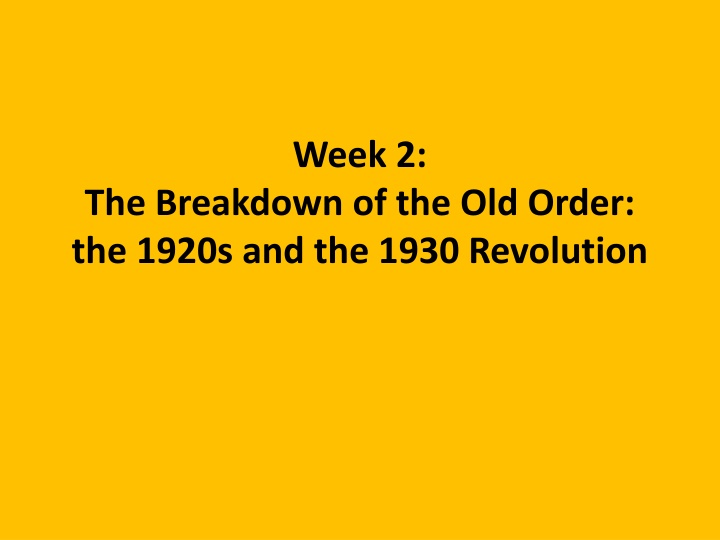

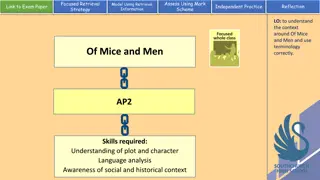
![Halal_Chicken_from_Brazil-_Ensuring_Quality_and_Authenticity[1]](/thumb/86918/halal-chicken-from-brazil-ensuring-quality-and-authenticity-1.jpg)

